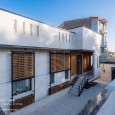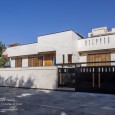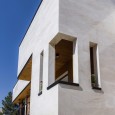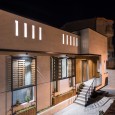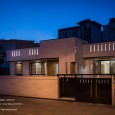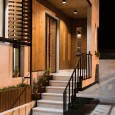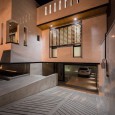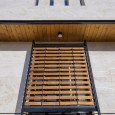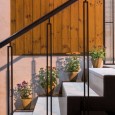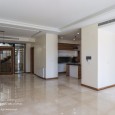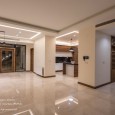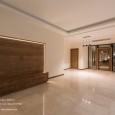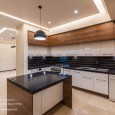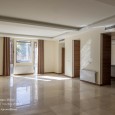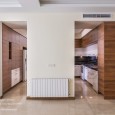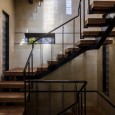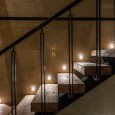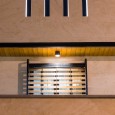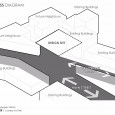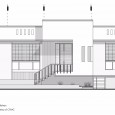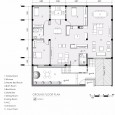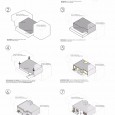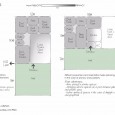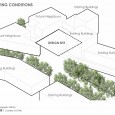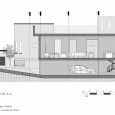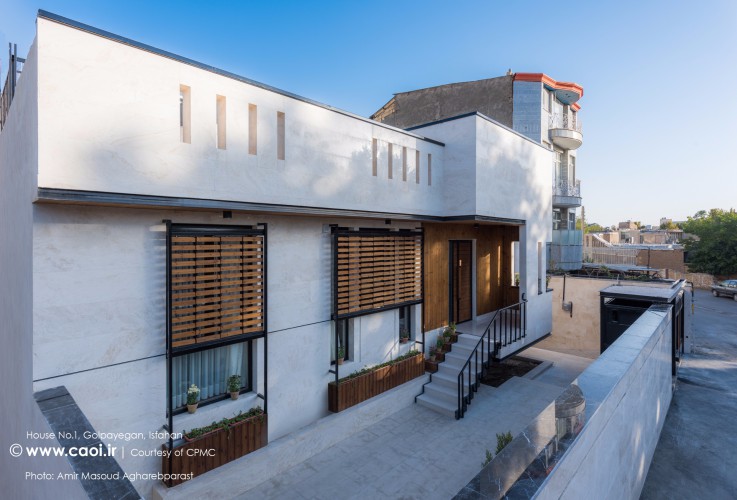Description
The House No.1 is located in Golpayegan city, one of the developing cities of Isfahan province, Iran. The site is in one of the evolving streets which the agricultural fields are transforming to residential area. Like every other project, this project has driving forces which formed its character. Some of these forces are listed below:
1- Different proportions of the site compared with regular buildings
2- Different planning strategy compared with regular plan design patterns
3- Neighborhood constraints affecting the shape of the building.
At the following, these forming forces will be discussed shortly. Although most of the existing residential lands are in rectangular shapes with regular proportions of 1:3, the land of this project is exactly in square shape with the size of 18x18 meters. According to municipality rules of construction, the owner is allowed to build their house on 60 percent of the area at the northern part of the land unless they acquire permission from the neighbors to build more. By this rule a land with proportions of 1:3 will have a yard with proportions of 1:1.2 but a land with proportions of 1:1 will face with a yard of proportioned 1:0.4. This will leads to a building so close to the yard walls which results lower privacy for its occupants and a feeling of having a small yard. To face with these problems some design strategies and technique were employed.
For instance to counteract the feeling of having a small yard at the first look of entering the yard, the entrance door has been rotated 90 degrees by recessing a small area from the street. By this technic the door will be opened towards the length of the yard instead of facing its width. Another challenge of this project has been arranging clients’ spatial requirements. In a conditions in which almost all of the residential buildings are planned with a unit stereotype regardless of the occupants' desires and needs, this project has employed another strategy.
The common stereotype is to have a large flat area (saloon) working as living room, guest hospitality area, and TV area and locating the other requirements such as bedrooms and kitchen around this area. However in this project this pattern has been rejected because of its disability in distinguishing the private and public spaces of the house at the required occasions. This problem has been solved by defining a private area and public area and connecting them with service spaces like kitchen, entrance area and WC. This has been one of the unique features of the building in its context.
The Golpayegan city is located near the stone mines of Abbas-Abad. Adding to this, the work forces for stone working is more accessible than every other forces. Therefore applying stone as the basic material looks to be a good choice. Beside this white stones, the application of wood added an attracting appearance to the facade. This material has been used to build movable louvers in front of the windows to compensate the lack of privacy mentioned earlier as well as controlling the entrance of light for its large windows.
Farsi
Please click on the Link below to read the information in Farsi Language.
Click Here!
